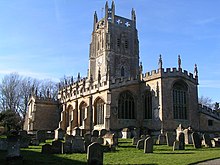
Lechlade is a town at the edge of the Cotswolds in Gloucestershire, England, 55 miles (89 km) south of Birmingham and 68 miles (109 km) west of London. It is the highest point at which the River Thames is navigable, although there is a right of navigation that continues south-west into Cricklade, in the neighbouring county of Wiltshire. The town is named after the River Leach that joins the Thames near the Trout Inn and St. John's Bridge.
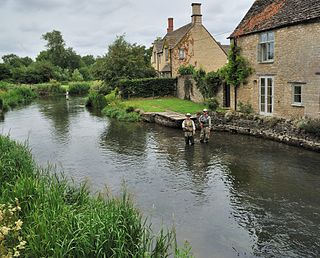
Fairford is a market town in Gloucestershire, England. The town lies in the Cotswold hills on the River Coln, 6 miles (9.7 km) east of Cirencester, 4 miles (6.4 km) west of Lechlade and 9 miles (14 km) north of Swindon. Nearby are RAF Fairford and the Cotswold Water Park.

The region now known as Gloucestershire was originally inhabited by Brythonic peoples in the Iron Age and Roman periods. After the Romans left Britain in the early 5th century, the Brythons re-established control but the territorial divisions for the post-Roman period are uncertain. The city of Caerloyw was one centre and Cirencester may have continued as a tribal centre as well. The only reliably attested kingdom is the minor south-east Wales kingdom of Ergyng, which may have included a portion of the area. In the final quarter of the 6th century, the Saxons of Wessex began to establish control over the area.
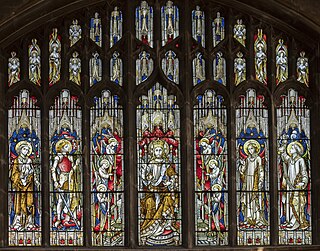
Hardman & Co., otherwise John Hardman Trading Co., Ltd., founded 1838, began manufacturing stained glass in 1844 and became one of the world's leading manufacturers of stained glass and ecclesiastical fittings. The business closed in 2008.

Charles Eamer Kempe was a British Victorian era designer and manufacturer of stained glass. His studios produced over 4,000 windows and also designs for altars and altar frontals, furniture and furnishings, lychgates and memorials that helped to define a later nineteenth-century Anglican style. The list of English cathedrals containing examples of his work includes: Chester, Gloucester, Hereford, Lichfield, Wells, Winchester and York. Kempe's networks of patrons and influence stretched from the Royal Family and the Church of England hierarchy to the literary and artistic beau monde.
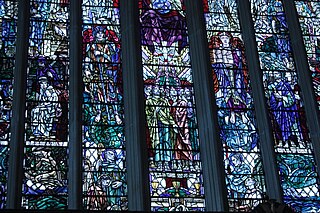
Douglas Strachan is considered the most significant Scottish designer of stained glass windows in the 20th century. He is best known for his windows at the Peace Palace in The Hague, Netherlands, at Edinburgh's Scottish National War Memorial and in cathedrals and churches throughout the United Kingdom. He is also known for his paintings, murals, and illustrations.
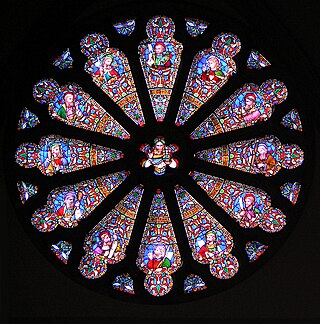
William Wailes (1808–1881) was the proprietor of one of England's largest and most prolific stained glass workshops.

Ralph Bigland was an English officer of arms, antiquarian and cheesemaker. He was born at Stepney, Middlesex, and was the only son of Richard Bigland and his wife, Mary. His father was a native of Westmorland, descended from the Bigland family of Biglands. He should not be confused with his nephew Sir Ralph Bigland.

St Mary's Priory Church, Deerhurst, is the Church of England parish church of Deerhurst, Gloucestershire, England. Much of the church is Anglo-Saxon. It was built in the 8th century, when Deerhurst was part of the Anglo-Saxon kingdom of Mercia. It is contemporary with the Carolingian Renaissance on mainland Europe, which may have influenced it.
Sir Walter Buckler was a diplomat, chamberlain of the household to Lady Elizabeth, later Queen Elizabeth I, and private secretary to Catherine Parr, the sixth wife of King Henry VIII.

The Church of St Mary the Virgin is a Church of England parish church in Meysey Hampton, Gloucestershire. It is in the Diocese of Gloucester and the archdeaconry of Cheltenham. It is a Grade II* listed building.

William Fermor, 1st Baron Leominster, styled Sir William Fermor, 2nd Baronet from 1661 to 1692, was an English politician and peer.
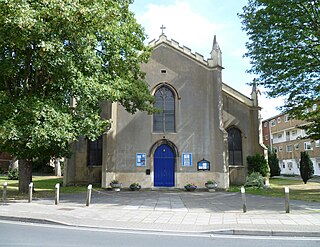
St Mary de Lode Church is a Church of England church immediately outside the grounds of Gloucester Cathedral. It is believed by some to be on the site of the first Christian church in Britain. The church is in the Diocese of Gloucester and Grade I listed by English Heritage. It has also been known as St. Mary Before the Gate of St. Peter, St. Mary Broad Gate and St. Mary De Port.

St Mary of the Angels Church is located to the south of the village of Brownshill in the parish of Chalford, Gloucestershire, England. It is a redundant Roman Catholic church vested in the Friends of Friendless Churches. The church is recorded in the National Heritage List for England as a designated Grade II listed building.
Hilary Godwin Wayment OBE, FSA (1912–2005) was a British author and historian of stained glass.
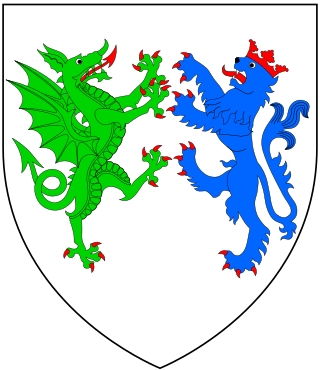
John Tame of Cirencester and of Beauchamp Court in the parish of Fairford, both in Gloucestershire, England, was a wealthy wool producer and merchant who re-built the surviving St. Mary's Church, Fairford, the former structure of which had been built by one of the Beauchamp Earls of Warwick in the 15th century. The 28 Fairford stained glass windows he installed in the church are considered amongst the finest and most complete in England. He and his son Sir Edmund Tame (d.1534) so fostered the trade transacted at Fairford, that it came to rival that of the nearby long-established town of Cirencester, which increase was remarked upon by his contemporary the antiquary John Leland (d.1552): "Fairford never flourished afore the cumming of the Tames into it".
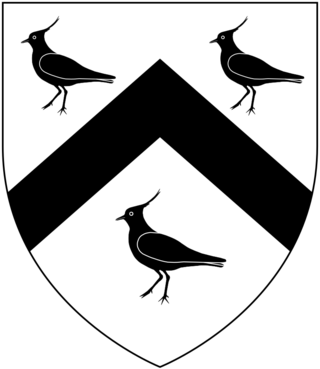
John Twynyho of Cirencester, Bristol and Lechlade, all in Gloucestershire, was a lawyer and wealthy wool merchant who served as Recorder of Bristol, as a Member of Parliament for Bristol in Gloucestershire in 1472-5 and in 1484 and for the prestigious county seat Gloucestershire in 1476. In 1478 he was Attorney General to Lord Edward (the future King Edward V, eldest son and heir of King Edward IV.
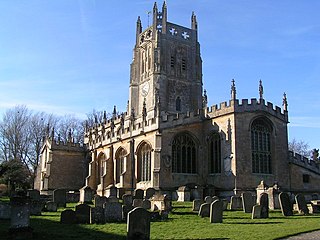
St Mary's Church is a Church of England church in Fairford, Gloucestershire, England. It is notable for its complete set of 28 medieval stained-glass windows, one of the best-preserved in England. Part of the tower dates from the early 15th century. The church was rebuilt at the end of the 15th century by John Tame (c.1430–1500), a wealthy local wool merchant. It is a Grade I listed building in the Perpendicular style.
